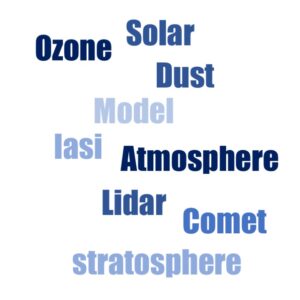
The Atmospheric Space Observations Laboratory is a joint research unit specializing in the study of fundamental physicochemical processes governing terrestrial and planetary atmospheres and their interfaces with the surface, ocean, and interplanetary environment.
For this end, the Laboratory has developed a strong instrumental skill, built innovative instruments deployed from the ground and sometimes put into orbit or going to meet other bodies of the solar system. Numerical atmospheric models are also developed and used to interpret the various observations.
LATMOS is a joint research unit (UMR 8190)
of the National Centre for Scientific Research (CNRS)
of the University of Versailles Saint-Quentin-en-Yvelines (UVSQ)
of Sorbonne University (SU)
of the Centre National d’Etudes Spatiales (CNES)
It was created in January 2009, following the merger of the Aeronomy Service (SA) and part of the CETP (see history).
LATMOS is part of the Pierre Simon Laplace Institute ( IPSL ) bringing together 9 laboratories whose research themes concern the global environment, a field which extends from the surface to the Sun on Earth and the other planets of the solar system.
Finally, for observation activities, it is attached to the Versailles Saint-Quentin-en-Yvelines Observatory ( OVSQ ) and the Paris 6 Observatory ( Ecce-Terra ) and contributes to services to the community .
It is a laboratory based on 2 sites ( Guyancourt , Paris ) bringing together around 150 permanent staff (researchers, teacher-researchers, engineers, technicians and administrative staff) and more than 230 people in total.


The laboratory promotes its work through numerous publications in scientific journals in the field and maintains strong collaborations with other French laboratories in the field and various other partners such as foreign laboratories but also industrial partners.

LATMOS is a laboratory with a strong instrumental component which develops:
In addition, skills and research in digital modeling and simulation are developed in support of this experimental research: